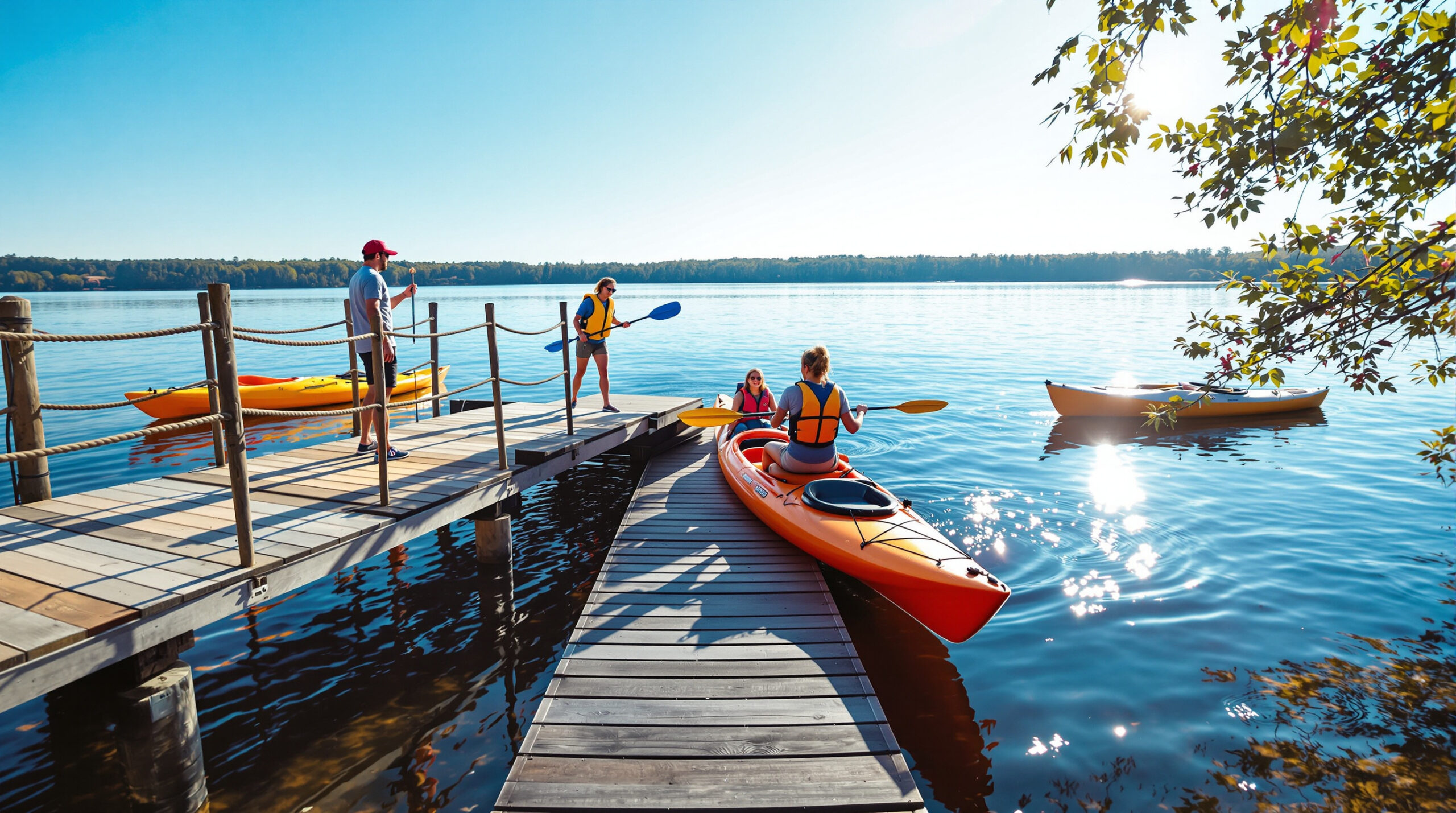GUNTERSVILLE, Ala. (AP) — Aug. 29, 2025 — Campers were still brewing coffee Friday morning when scissors flashed on State Campground Road, marking the debut of Lake Guntersville State Park’s third kayak launch. The new structure promises faster access to the Tennessee River and its approximately 68,000–69,000-acre reservoir, a benefit park managers say visitors have been requesting, a WAFF report noted.
For outdoor-hospitality operators tracking guest trends, the ribbon-cutting offers an example of how modest waterfront upgrades can tap the surging popularity of paddlesports, extend guest stays and open fresh revenue lines without the capital outlay of bigger marina projects.
The ceremony drew local and state leaders to the campground’s shoreline. Among those holding the ribbon were state Sen. Wes Kitchens; Indya Guthrie, president of the Friends of Lake Guntersville State Park; Martha Grace Mize, director of growth and development for the Alabama Scenic River Trail; and Lake Guntersville Superintendent Heath Puckett, according to local outlet 256today. Other local civic and business leaders were also present.
Park officials described the launch as financed through a Waterway Enhancement Program grant awarded by the river trail organization to the Friends group, calling it an example of collaborative public-private funding often used in park projects.
“We have the campground here, so we have a captive audience,” Puckett said.
“A lot of people don’t bring their own kayaks, so a lot of times they get here, and they want activities, so we have lots of activities here from golf to zip lining, horseback riding, hiking, biking, fishing, of course on the lake, so kayaking has become really popular in the last few years and we’re starting to see more demand,” he added in the WAFF coverage.
Park staff said the addition is expected to give dozens of explorers more access to the water and are considering expanding rental offerings elsewhere on Guntersville Lake, the WAFF story said.
For operators eyeing similar amenities, bundling access with revenue is key. Parks often pair a launch with hourly or day-rate kayak and stand-up paddleboard rentals, sunrise tours or beginner clinics. Mobile reservation apps capture spur-of-the-moment bookings, while “paddle-and-stay” packages can nudge campers to add another night.
Simple QR-code check-ins help track usage and justify future fleet purchases. By layering these monetization tactics onto similar projects, park and campground operators can translate increased paddling interest into measurable revenue rather than just higher foot traffic.
Design and maintenance choices can head off risk as traffic grows. Low-slip decking, grab rails and ADA-compliant slopes welcome a wider range of guests. Shoreline stabilization—whether rip-rap or native plantings—protects banks from constant push-offs.
Clear safety signage, a stocked rescue kit and routine hardware inspections create a safety net that keeps liability in check and assets in service. Increased use brings wear-and-tear and heightened safety exposure, so outlining design, maintenance and risk-management steps gives campground and RV park owners an actionable checklist if they plan to emulate the park’s new launch and meet similar demand safely and sustainably.
The Guntersville project is part of a broader shift as state parks and private campgrounds nationwide install small-footprint launches as cost-effective ways to diversify amenities, attract younger adventure travelers and broaden shoulder-season appeal. Grants and friends-group partnerships often accelerate timelines that might otherwise stall in the budget cycle.


